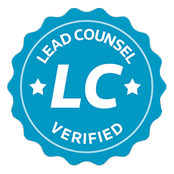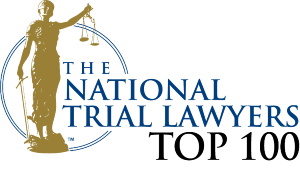Workplace accidents can be jarring, both mentally and physically, especially if you find yourself clutching your neck in pain. The neck, being a pivotal part of our anatomy, needs utmost care and immediate attention if injured. If you’re in this predicament, follow these steps to ensure your well-being and safeguard your rights.
Report the Incident
Before anything else, let your supervisor or manager know. Even if you think the injury is minor, timely documentation is crucial. This serves two purposes: it sets in motion any workplace safety protocols, and it’s also beneficial for any future compensation claims.
Seek Medical Attention
Head straight to a medical professional. Some injuries don’t manifest symptoms immediately, and a trained eye will identify issues you might overlook. Always prioritize your health. Don’t delay – early intervention can prevent further complications.
Document Everything
Photos, names of witnesses, exact time, and location – jot all the specifics down. This step is not just for legal matters. Tracking pain levels or symptoms can also help your doctor understand your condition better.
Limit Physical Activity
If your doctor advises it, take some time off. The neck is intricate and sensitive. Overexerting or moving in the wrong way can exacerbate an injury. Rest is vital for recovery, and pushing through the pain isn’t worth long-term damage.
Seek Legal Counsel
Depending on the severity and the circumstances, you might consider seeking legal advice. A knowledgeable attorney can guide you through workplace injury claims and help you understand your rights and entitlements.
Attend Follow-Up Appointments
Your initial doctor’s visit won’t be the last. Continuous monitoring is key to ensuring your neck heals properly. Attend all recommended therapy sessions, scans, or consultations. It’s essential to your health and any potential claim you make.
Communicate with Your Employer
Keep the lines of communication open. Update them on your medical status and discuss any required accommodations upon your return. Remember, transparency benefits both parties.
Practice Neck-Safe Habits
While recovery is the main focus, prevention is equally vital. Learn from this incident. Incorporate neck-safe habits into your daily routine, like maintaining a proper posture or using ergonomic office equipment.
Lean on Your Support System
Physical pain can bring emotional stress. Share your feelings with trusted friends, family, or counsellors. Emotional wellbeing plays a pivotal role in holistic healing.
Stay Informed
Laws, rights, and workplace policies evolve. Stay updated. Being knowledgeable empowers you, ensuring you’re making informed decisions every step of the way.
Understanding Neck Injuries
The neck, or cervical spine, consists of seven stacked vertebrae. Between these vertebrae are discs that cushion and facilitate movement. The neck supports the head and protects the spinal cord, a crucial pathway for nerves communicating between the brain and the rest of the body.
Common Types of Neck Injuries
- Whiplash: Often resulting from sudden jolts are impacts, this injury affects the soft tissues of the neck. It’s essential to diagnose and treat it promptly to prevent chronic pain or complications.
- Stress and sprains: Overstretching or tearing of the muscles (strains) and ligaments (sprains) can cause significant pain and require varying degrees of treatment and rest.
- Herniated disc: When the soft center of a spinal disc pushes through a crack in the tougher exterior, it can irritate nearby nerves, leading to pain or numbness.
The Importance of Ergonomics
- Workstation setup: If your job requires prolonged periods at a desk, ensure your monitor is at eye level. Your chair should support the natural curve of your spine, and your feet should be flat on the ground.
- Frequent breaks: Taking short breaks to stretch or walk around can reduce the strain on your neck. A simple 5-minute break every hour can make a difference.
- Use of tools: If your job involves manual labor, use tools that are designed to minimize strain. Also, ensure they’re in good working condition and used correctly.
Financial Implications of Neck Injuries
- Medical bills: The immediate aftermath of a neck injury might involve scans, consultations, and therapy sessions. These can be expensive, even with insurance.
- Loss of income: Time off work for recovery means a potential loss of income. When you factor in long-term implications, the financial impact can be substantial.
- Insurance claims: If your injury is work-related, familiarize yourself with your employer’s insurance policy. Some policies may cover therapy or rehabilitation services, while others may not.
Have you injured your neck in a workplace accident? The team at Payam Law are on your side. Whether you’re dealing with worker’s compensation claim issues or want to make a personal injury claim against your employer, we can help. Find us at:
- Beverly Hills – 8383 Wilshire Blvd, Suite 830, Beverly Hills, CA 90211
- Los Angeles – 212 East Pico Blvd, Suite #4, Los Angeles, CA 90015
- Tulare – 100 E. Cross, Suite #122, Tulare, CA 93274
- Hanford – 13400 Hanford Armona Rd, Suite #B
Call now for a free consultation on (877) 729-2652 or (323) 782-9927.














